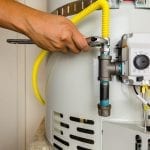We've unearthed this post involving Tips For Maintaining Your Hot Water Heater listed below on the net and felt it made perfect sense to write about it with you on this page.

Warm water is essential for everyday convenience, whether it's for a refreshing shower or cleaning dishes. To ensure your warm water system runs efficiently and lasts much longer, normal maintenance is crucial. This article offers sensible tips and understandings on just how to maintain your home's warm water system to stay clear of disruptions and expensive fixings.
Intro
Maintaining your home's hot water system may appear challenging, however with a couple of simple steps, you can ensure it runs smoothly for years to come. This overview covers every little thing from understanding your hot water system to DIY upkeep tips and understanding when to employ specialist help.
Significance of Preserving Your Warm Water System
Normal maintenance not only extends the life expectancy of your warm water system yet additionally ensures it operates effectively. Ignoring maintenance can cause decreased efficiency, higher energy expenses, and also early failure of the system.
Indicators Your Hot Water System Needs Maintenance
Understanding when your warm water system requires focus can protect against significant issues. Look out for signs such as inconsistent water temperature, unusual noises from the heating unit, or rustic water.
Flushing the Water Heater
Flushing your water heater removes debris accumulation, enhancing efficiency and prolonging its life.
Monitoring and Replacing Anode Rods
Anode poles protect against corrosion inside the tank. Inspecting and changing them when broken is critical.
Facility Concerns Needing Expert Assistance
Examples consist of significant leaks, electric issues, or if your water heater is consistently underperforming.
Regular Professional Maintenance Benefits
Specialist upkeep can include detailed assessments, tune-ups, and guaranteeing compliance with safety and security requirements.
Inspecting and Adjusting Temperature Level Setups
Changing the temperature setups guarantees optimal efficiency and safety and security.
Do It Yourself Tips for Maintenance
You can perform numerous upkeep tasks yourself to maintain your hot water system in top problem.
Looking for Leakages
On a regular basis examine pipes and links for leaks, as these can bring about water damages and higher costs.
Comprehending Your Hot Water System
Prior to diving right into maintenance jobs, it's practical to understand the basic elements of your hot water system. Typically, this consists of the water heater itself, pipelines, anode rods, and temperature level controls.
Regular Monthly Maintenance Tasks
Normal regular monthly checks can aid catch small problems prior to they intensify.
Testing Stress Relief Valves
Examining the pressure safety valve ensures it works properly and protects against extreme stress buildup.
Protecting Pipelines
Insulating hot water pipes lowers warm loss and can conserve energy.
When to Call a Specialist
While DIY upkeep is advantageous, some concerns need expert experience.
Final thought
Normal maintenance of your home's warm water system is important for performance, longevity, and expense financial savings. By complying with these pointers and knowing when to seek specialist help, you can make sure a reliable supply of hot water without unanticipated disruptions.
How to Maintain an Instant Hot Water Heater
Before tinkering with your hot water heater, make sure that it’s not powered on. You also have to turn off the main circuit breaker and shut off the main gas line to prevent accidents. Also turn off the water valves connected to your unit to prevent water from flowing into and out of the appliance. 2. When you’re done, you have to detach the purge valves’ caps. These look like the letter “T†and are situated on either side of the water valves. Doing so will release any pressure that has accumulated inside the valves while at the same time avoid hot water from shooting out and burning your skin. 3. When the purge valves’ caps are removed, you have to connect your hosing lines to the valves. Your unit should have come with three hoses but if it didn’t, you can purchase these things from any hardware or home repair shops. You can also get them from retail stores that sell water heating systems. Read the user’s manual and follow it to complete this task properly. When the hosing lines are connected, open the purge port’s valves. 4. You should never use harsh chemical cleaners or solutions when cleaning your unit. Make use of white vinegar instead. It should be undiluted and you’ll probably use about 2 gallons. 5. Now flush your water heater. This task should probably take about 40 minutes. We can’t give you specific directions for this because the procedure is carried out depending on the type, model and brand of your heater. With that being said, refer to the user’s manual. 6. When you’re done draining the unit, you have to turn off the purge port valves again. Remove the hosing lines that you earlier installed on each of the water valves. Put the valve caps (purge port) back in their respective places and be very careful so as not to damage the rubber discs that are found inside these caps. 7. Now that everything’s back in place, check your user’s manual again to find out how to reactivate your water heating system. 8. Once it is working, turn one of your hot water faucets on just to let air pass through the heater’s water supply pipes. Leave the tap on until water flows smoothly out of it. https://www.orrplumbing.com/blog/2014/september/how-to-maintain-an-instant-hot-water-heater/

I'm very fascinated with Water Heater Maintenance Tips You Can't Afford to Forget and I really hope you enjoyed reading my blog posting. Do you know another person who is looking into the topic? Why not promote it. Thanks a lot for going through it.
Click Here